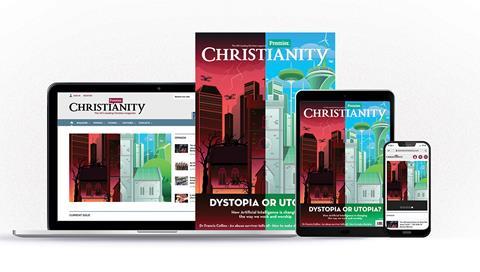Scheduled for 7 May, the conclave to elect the next pope is fast approaching. As the Catholic Church prepares for its new leader, Thomas Chacko explains the origins of the conclave, how the confidential process works, and the spiritual weight behind it

The conclave to elect the next pope will begin on 7 May. The pope is the Bishop of Rome, and during Christianity’s first millennium, new popes were chosen in similar ways to other bishops — by the agreement of the local clergy or the citizens more generally. In 1059, Pope Nicholas II declared that the cardinals would choose the next pope. Cardinals still represent the clergy of Rome: cardinals based outside the city, such as the bishops of leading cities around the world, each have a particular church in Rome that is named as “theirs”.
Where did the idea of a conclave come from?
The conclave, requiring that the cardinals gather in private and not leave until they have elected a pope, was first required by the Second Council of Lyons in 1274. In the Middle Ages, some conclaves were encouraged to reach a decision by progressively reducing their allowance of food, but that has not happened for centuries.
The current rules were set out by John Paul II in 1996 and revised by Benedict XVI in 2013.
Who can vote?
All cardinals who were younger than 80 when Pope Francis died can vote.
How many are there?
There are 135 “cardinal electors”. Three are English: Cardinal Nichols, the Archbishop of Westminster; Cardinal Roche, a senior Vatican official; and Cardinal Radcliffe, a well-known spiritual writer from the Dominican order who was named a cardinal a few months ago.
What happens inside the conclave?
The conclave must start within 20 days of the pope’s death and begins with a Mass “for the choice of a pope,” followed by a meditation preached to the cardinals once they have gathered in the Sistine Chapel. The cardinals must not communicate with the outside world during the election (which includes not receiving news) and must not engage in conversation with anyone they encounter within the Vatican during that period.
How are elections held?
Elections are by secret ballot, held in the Sistine Chapel. After swearing an oath collectively and individually, each cardinal is given two or three ballot papers on which “I elect as Supreme Pontiff” is written in Latin, with a space left below for writing the name of the candidate. The cardinals process to the altar of the Sistine Chapel, where they kneel for a brief moment of prayer, then rise and place the folded ballot paper onto a gold circular plate and slide it into a large chalice on the altar.
The ballots are shaken and counted in full view of everyone present. Then the ballots are read out and counted. If an individual receives two-thirds of the votes, they are elected.
The chain of Bishops of Rome stretches back to people who knew Jesus
There is one ballot on the afternoon of the first day. On the following days, there are two ballots each morning and two each afternoon. After each pair of ballots, the votes are burnt, and the smoke from this is visible from the well-known chimney stack outside: black smoke indicates that no one has been elected. Since 1914, white smoke is released when a pope has been chosen.
After seven ballots, if nobody has reached the two-thirds threshold, no votes are held for a day, which is to be spent in prayer, informal discussions among the cardinals, and a spiritual address given by one of them. There are then another seven ballots over three days. If after 21 ballots there is still no one chosen, the choice is then made between the two names that received the most votes in the final ballot — but there must still be a two-thirds majority.
Why does it matter?
This is the world’s oldest elected office. The chain of Bishops of Rome stretches back to people who knew Jesus. It has survived the end of civilisation at least once, as well as revolutionary upheavals when many believed the papacy had come to an end — such as the Venice conclave of 1799, the last to take place outside Rome, after Pius VI had died a prisoner of Revolutionary France.
How spiritual is the process?
Prayer, as well as discussion, is central to the conclave. The cardinals are making a practical choice, but they are seeking to be guided by God in doing this. Much commentary will present this as political — and in a way, it is — though the factions and politics of the Catholic Church do not map simply onto secular ideas of left or right, liberal or conservative. But it is also spiritual. When we say that the election, and the pope, are guided by the Holy Spirit, we do not mean that the cardinals always make good choices, or that popes always govern well. But Christ is at work in their choice nonetheless.
For Catholics, this is a supernatural as well as an administrative office, because we believe the Church (meaning the Christian people) is not just a human institution, but a core part of the story being told of God’s love for humanity and how that is to be revealed.
We also say that the structures that embody the Church’s authority to teach — with the bishops as successors to the Apostles and the pope as successor to St Peter — are part of that divine story, preventing the community Christ founded from dissolving into incoherence and making it possible for us, two thousand years on, to identify and pass on the teaching of Christ.
The promises Jesus made to Peter in the Gospels — that the Church will not (for all its terrible failures) turn away from Christ or stop revealing his teaching to the world — are embodied in the popes.
So when the senior Cardinal Deacon comes onto the loggia of St Peter’s to announce the election, he begins by saying: “I bring you news of great joy.” The promises are renewed, the Church on Earth is complete again — and that is much more important than who it is that the conclave has asked to take on this office.




































No comments yet